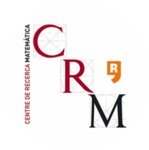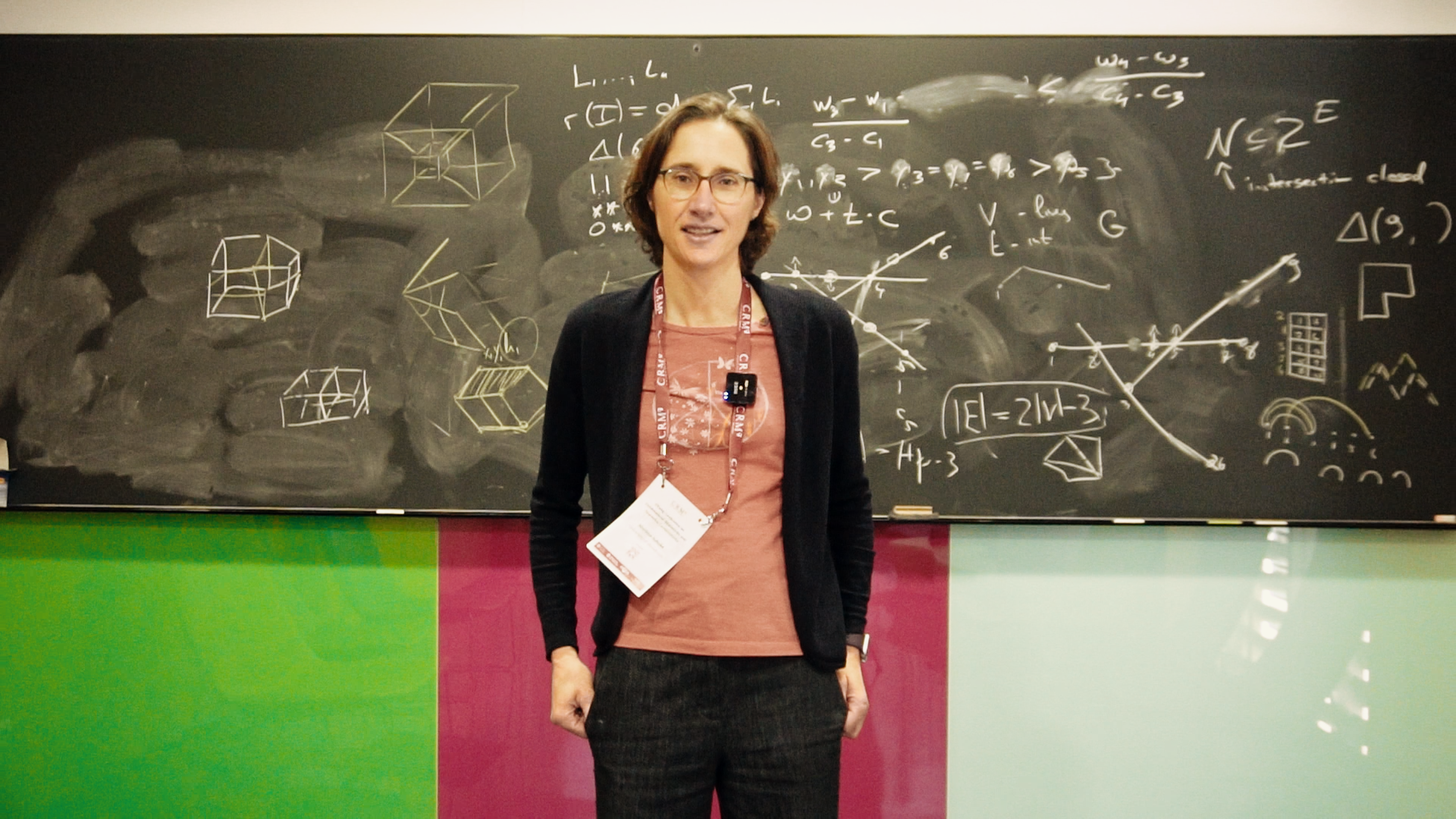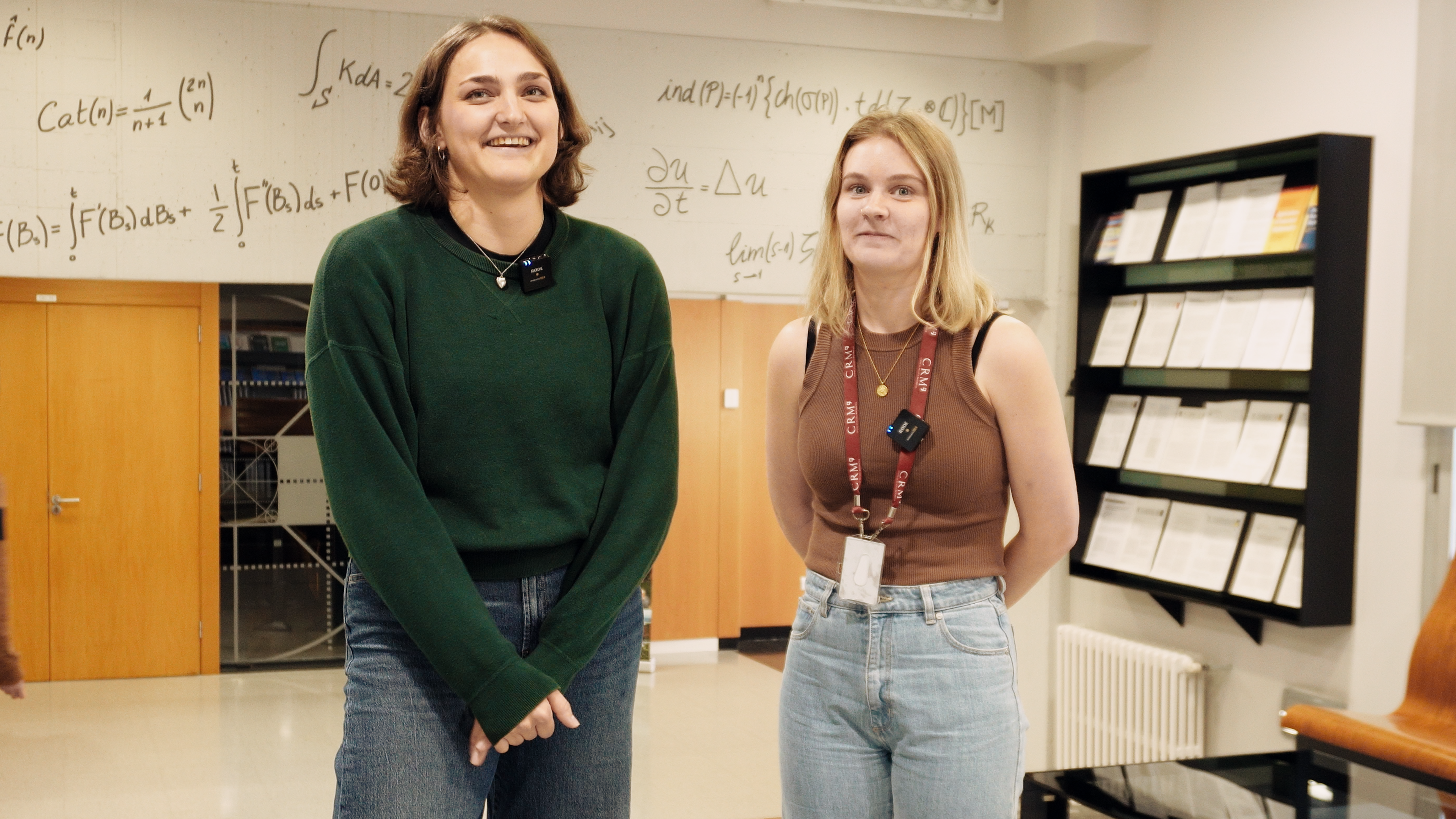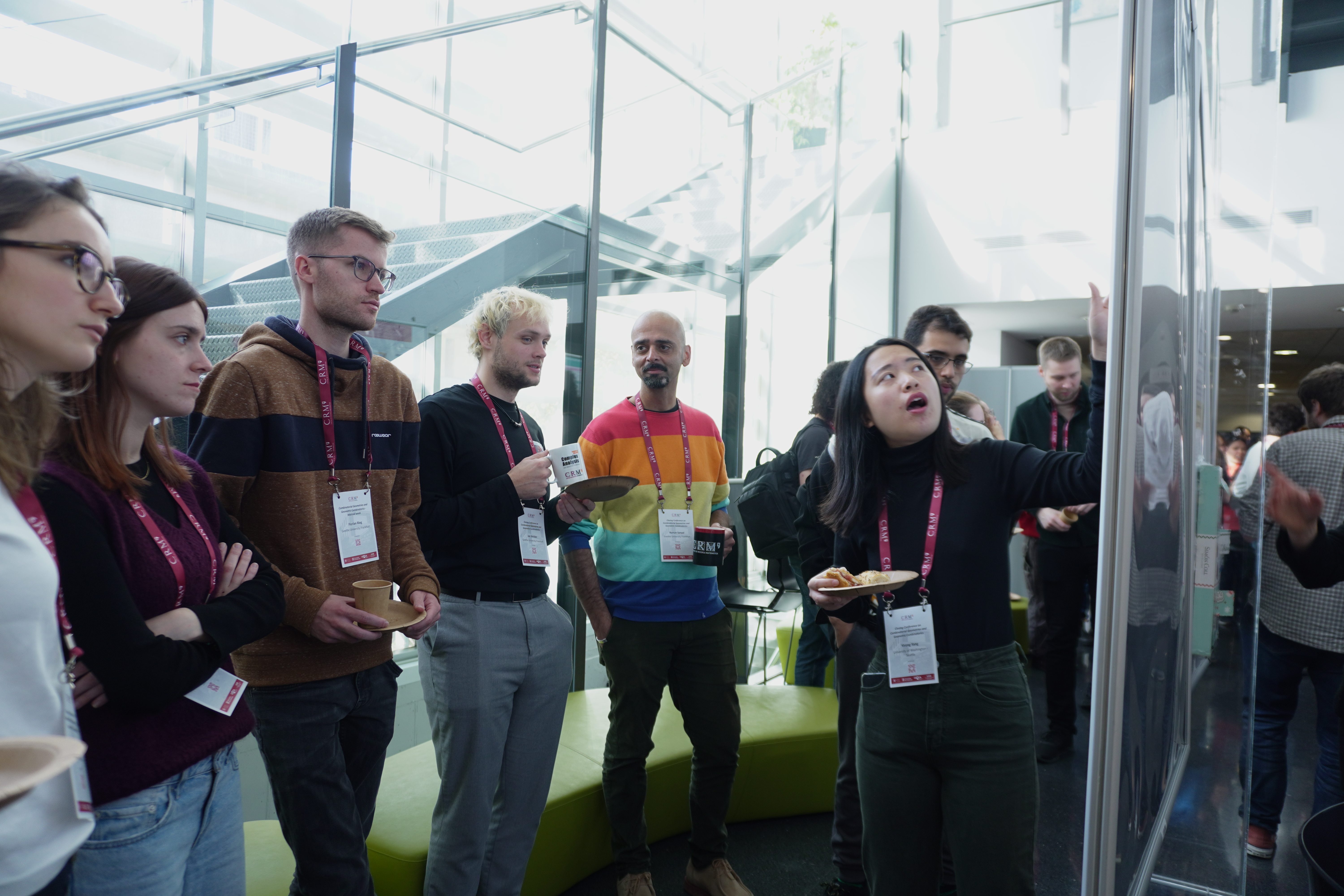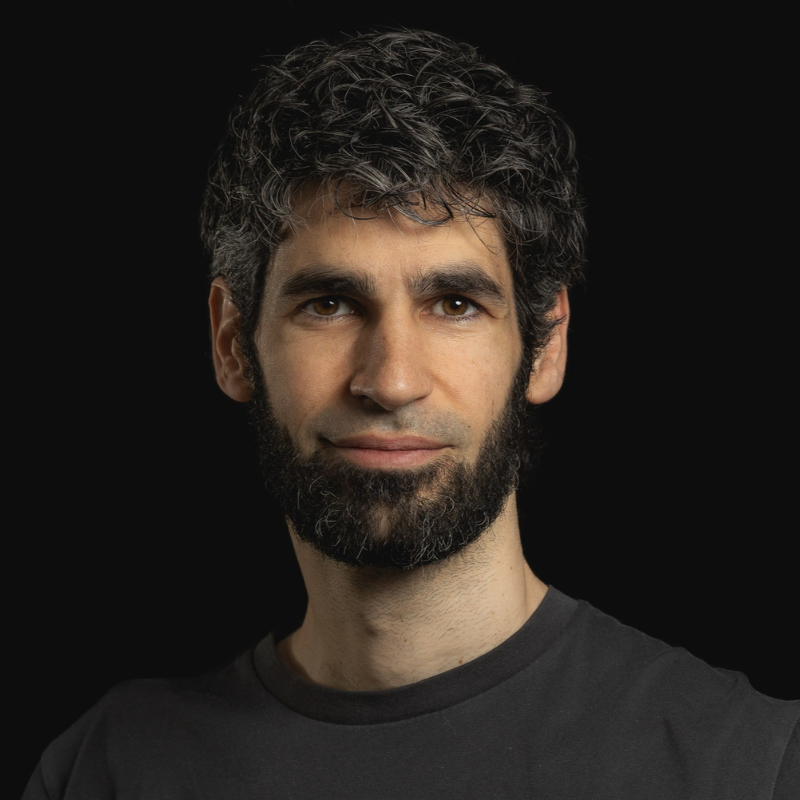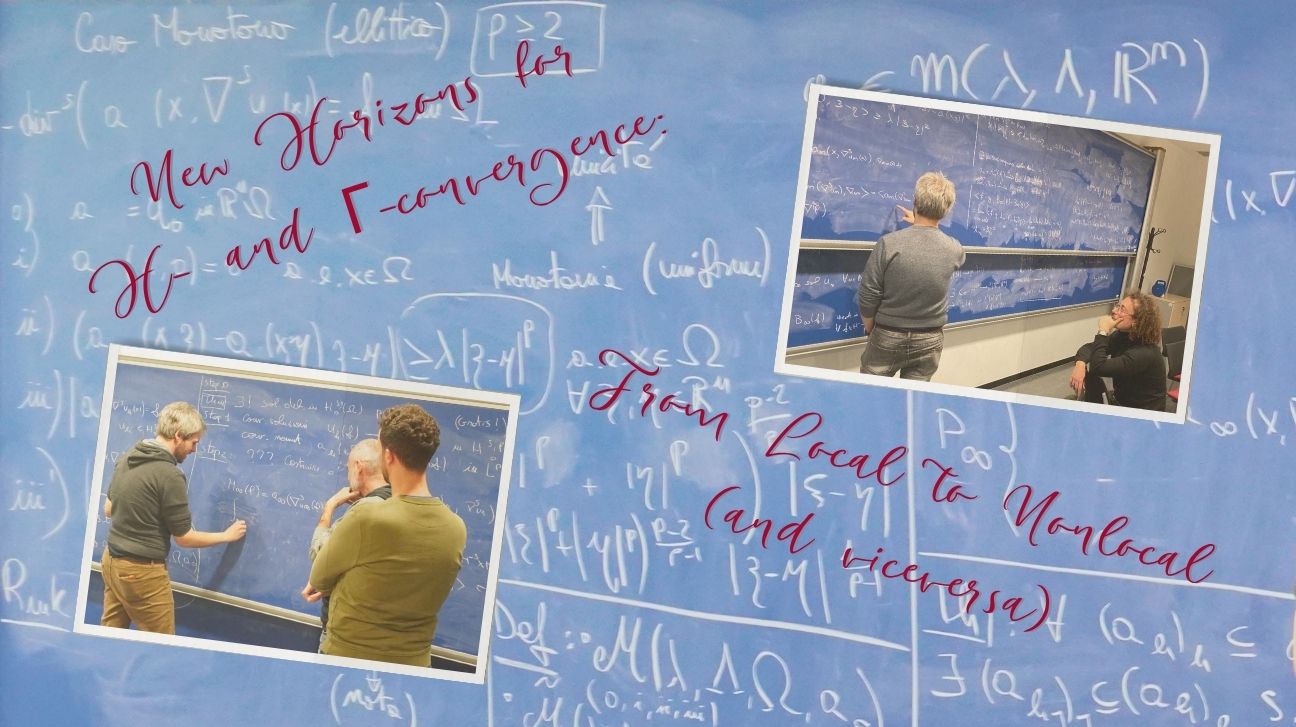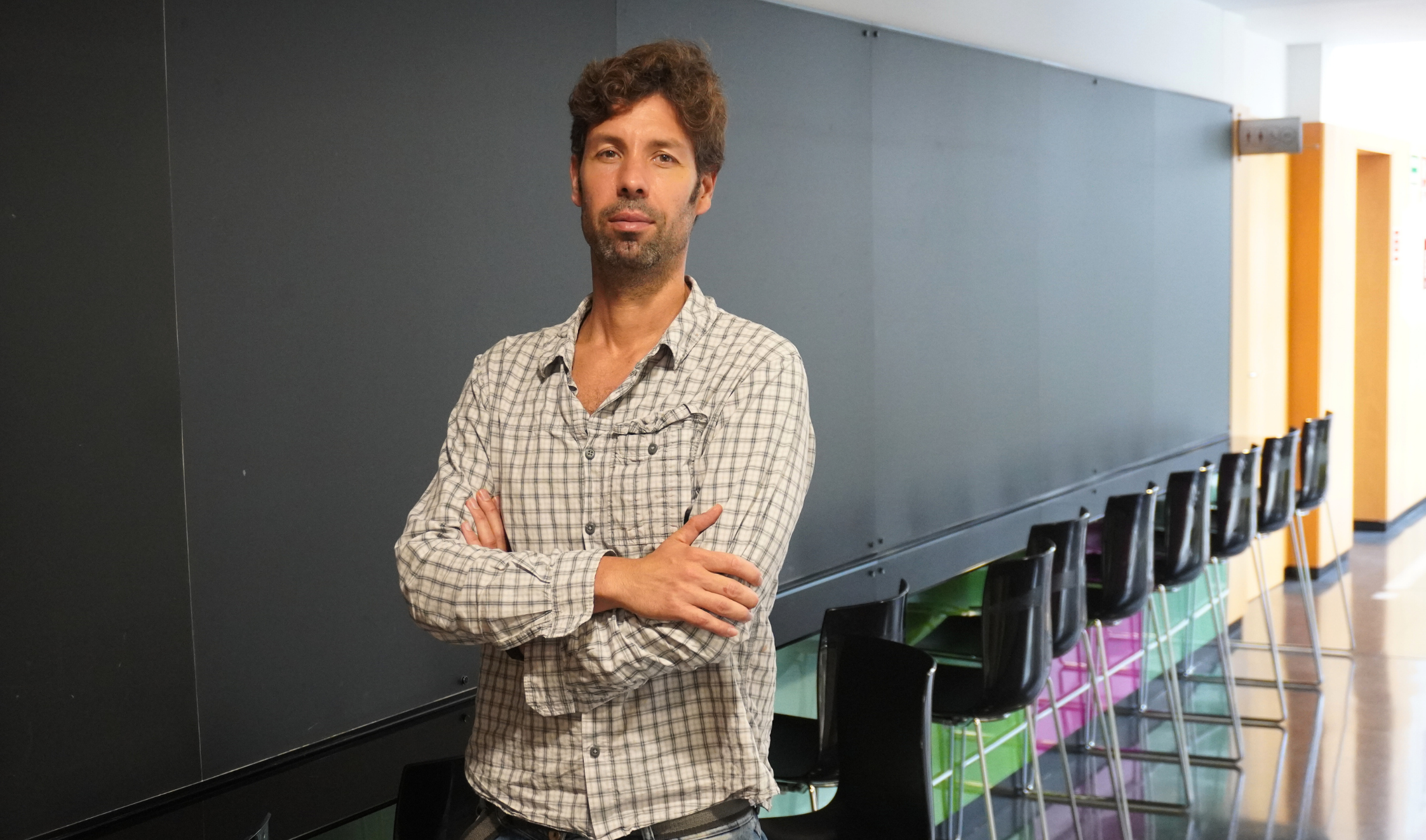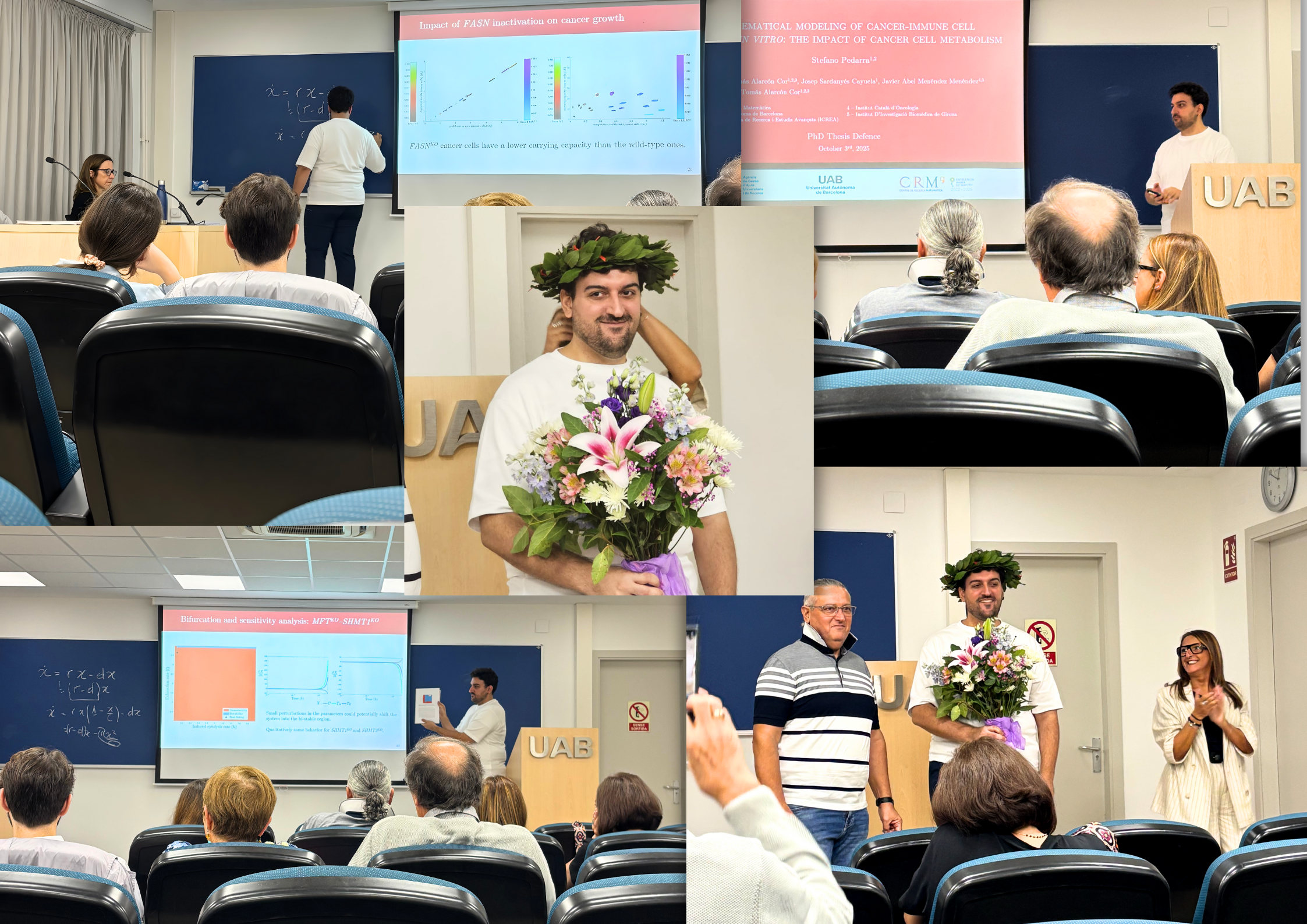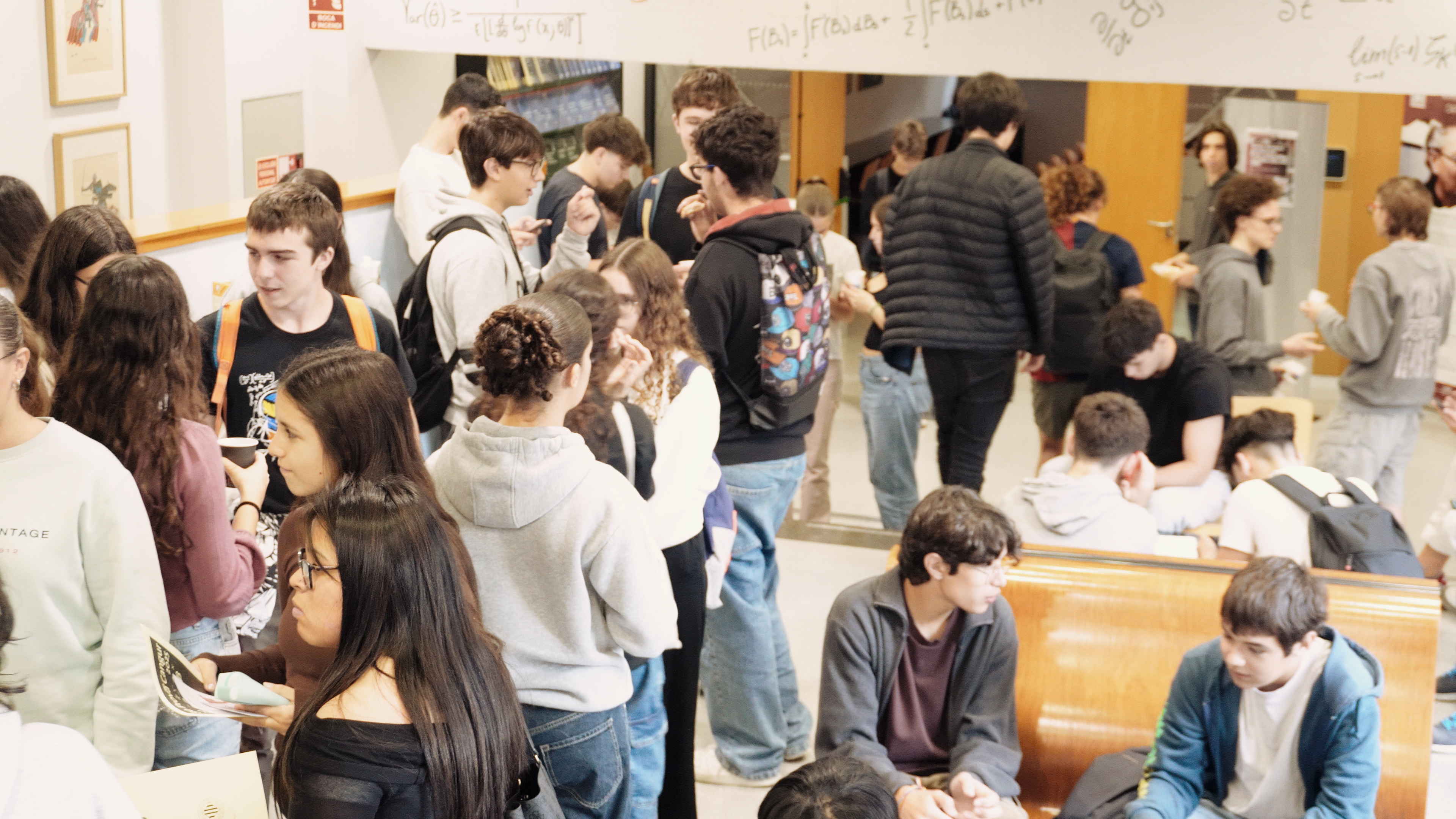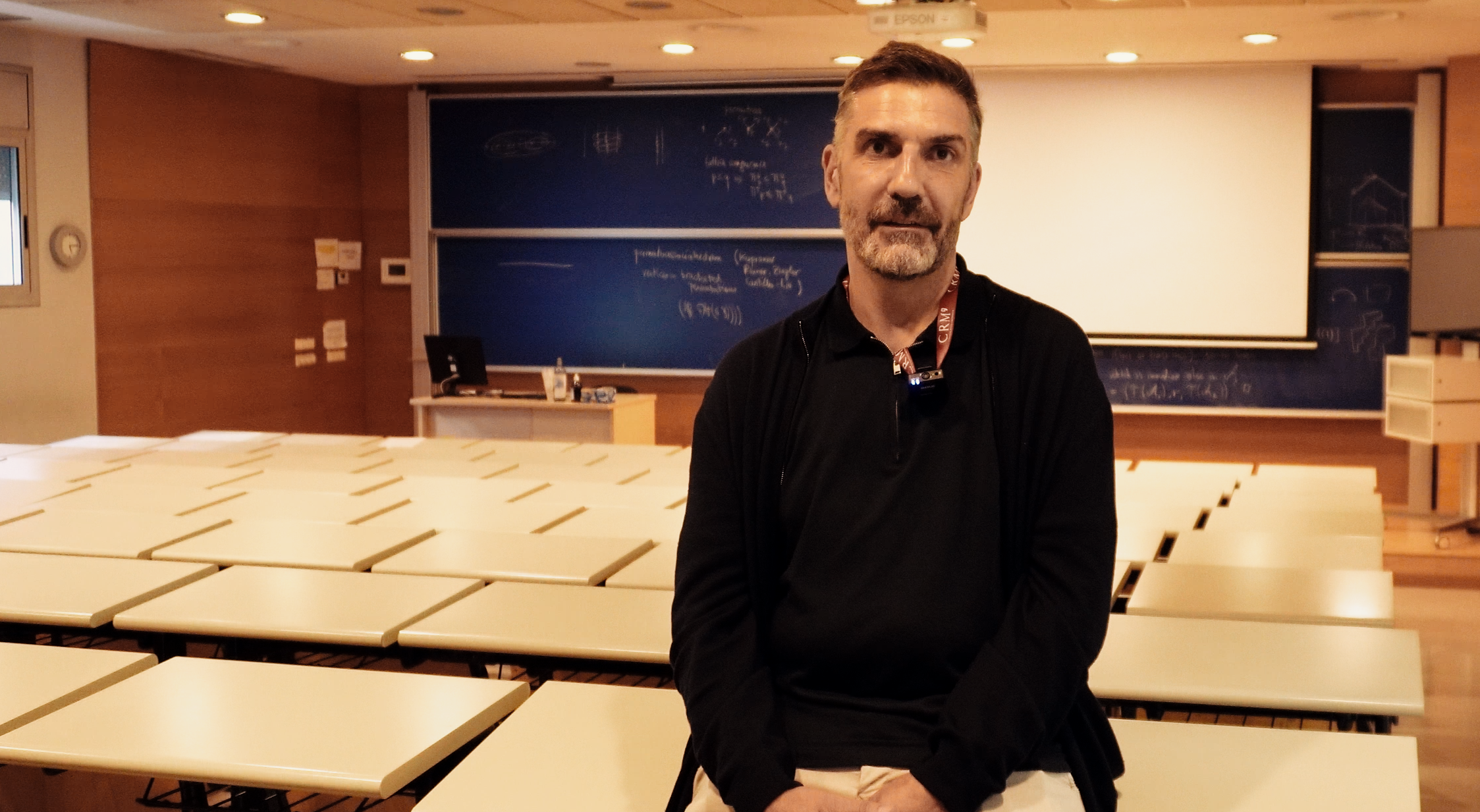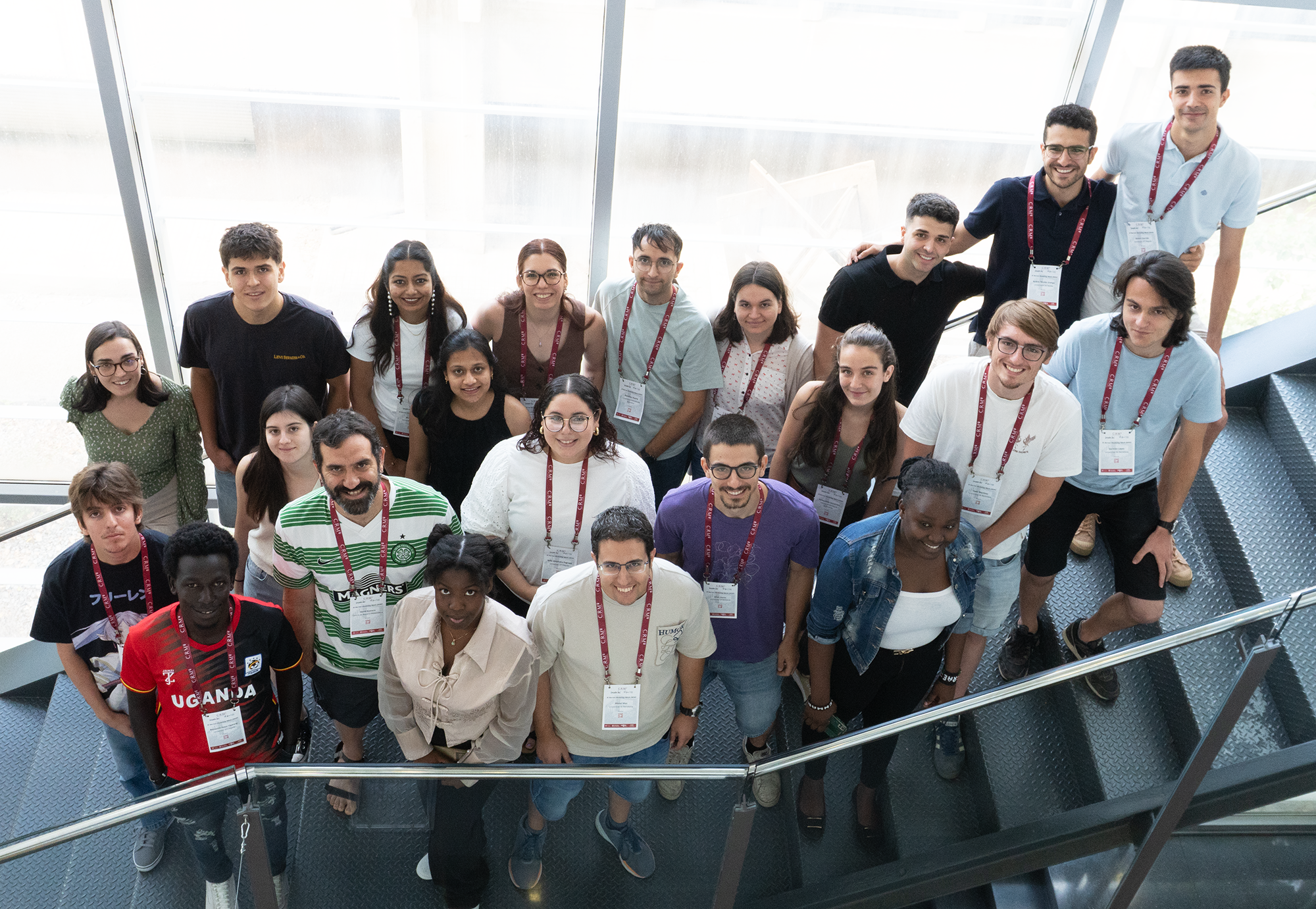
From July 7 to 11, the CRM became a hub for collaborative problem-solving during the XI Iberian Modeling Week, an international training initiative that brought together nearly 30 students from diverse academic backgrounds to tackle real-world challenges using mathematical modeling. Through hands-on work on industrial problems, ranging from public transport and biomedical diagnostics to urban planning and renewable energy, the participants not only applied their skills, but also experienced the power of teamwork and interdisciplinary thinking.
For five days, the CRM classrooms echoed not with lectures but with the buzz of teamwork. From July 7 to 11, 2025, the Centre de Recerca Matemàtica hosted the eleventh edition of the Iberian Modeling Week (IMW), a training experience where mathematics steps outside the classroom and into the messy, fascinating world of real-world problems.
Organised by the CRM, in collaboration with math-in (Spain) and PT-MATHS-IN (Portugal), the IMW brought together nearly 30 students from across Europe (from Barcelona to Lisbon, from Hamburg to L’Aquila) to tackle the applications of mathematics head-on. And not all of them came from a pure mathematics background. Among the participants were students of physics, chemistry, artificial intelligence, biomedical engineering, and aerospace engineering, bringing with them diverse perspectives and problem-solving strategies.
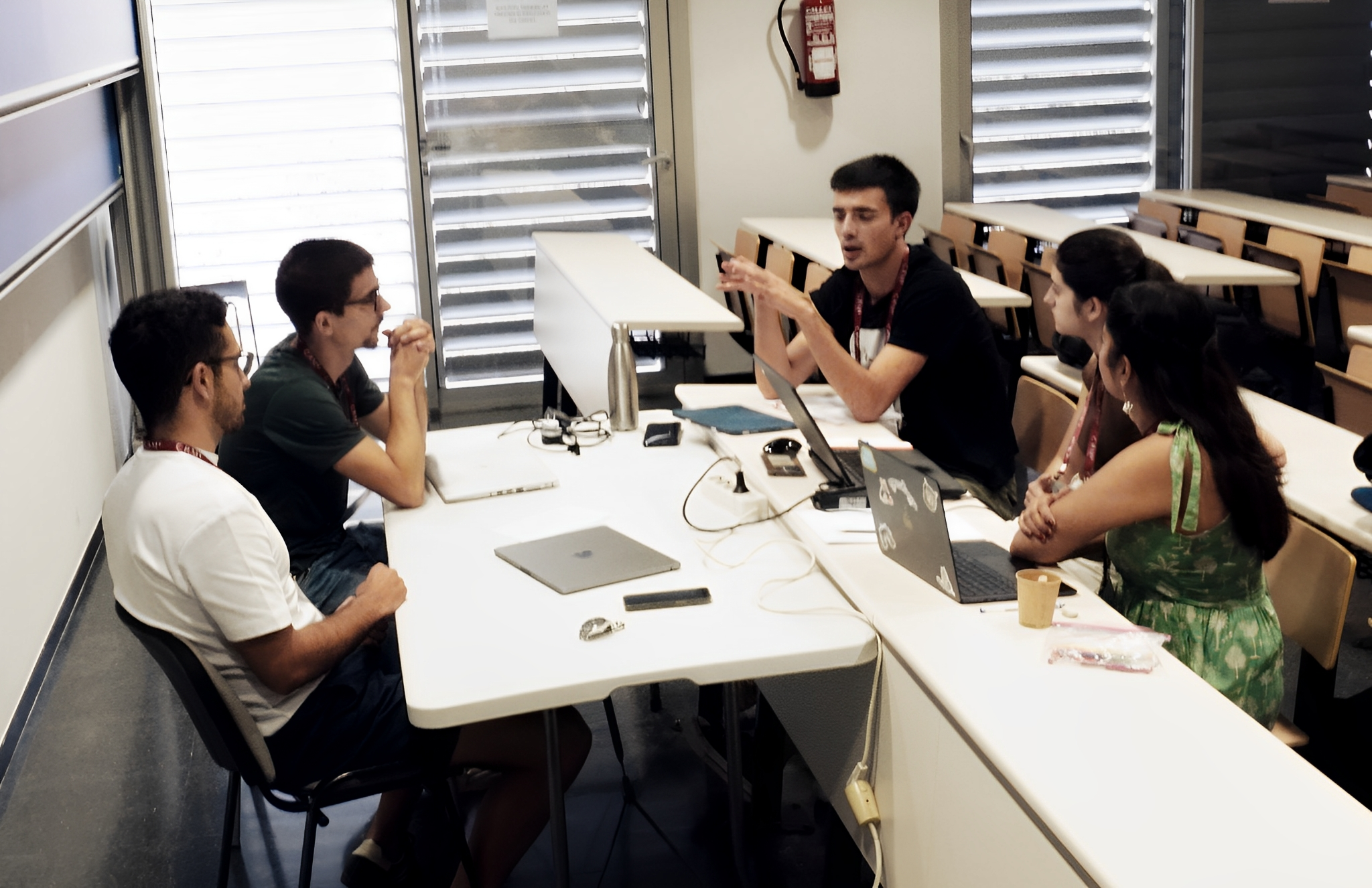
“It was incredible to work on a problem that’s actually useful for society,” said Álvaro Garrido, a participant from the University of L’Aquila, in Italy. “We often study theory, but here we had to make something work under real conditions; with data, with deadlines, with ambiguity.” Over the course of the week, participants worked in teams under the guidance of researchers and industry mentors, navigating challenges that ranged from public transport optimisation to biomedical diagnostics.
Each challenge had a real industrial or societal angle. One group modeled the optimal allocation of buses throughout a city’s daily cycle, factoring in not only trip duration and passenger demand but also synchronisation strategies to minimise fuel use and waiting times. Another team worked on the physics of blood flow, refining the Windkessel model to better understand hemodynamic changes during venous occlusion using real data from non-invasive spectroscopy.
A third team worked on a problem as timely as it was complex: how to place climate shelters in cities to ensure maximum accessibility for vulnerable populations during extreme heat events, using Barcelona as a case study. They used demographic and geographic datasets to develop algorithms that balanced social equity with spatial efficiency. Meanwhile, a fourth team wrestled with the trade-off between energy harvesting and flow efficiency in asphalt solar collectors, a problem at the crossroads of renewable energy, fluid dynamics, and infrastructure design.
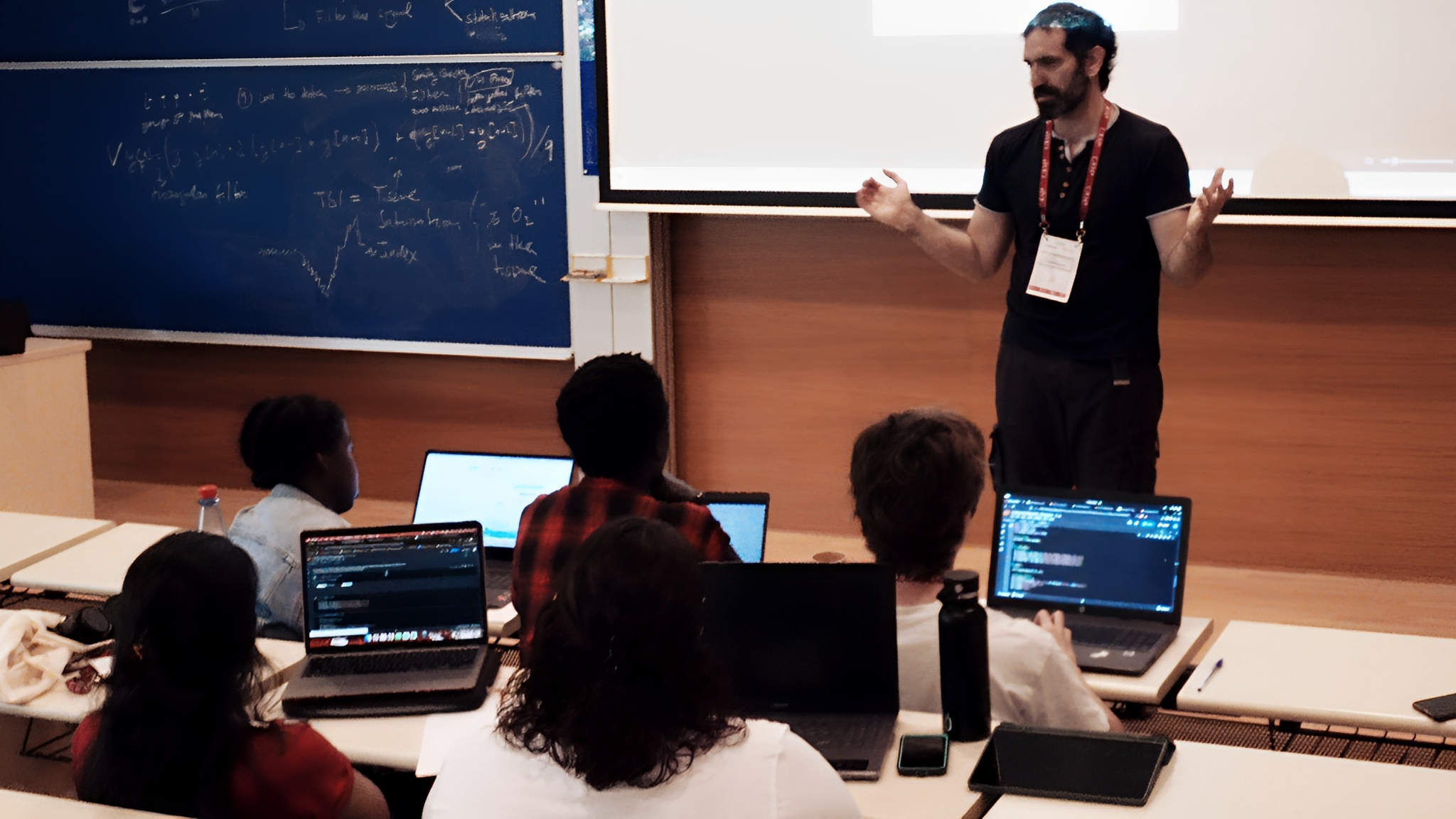
For Angelica Chanvoedou Abaga, a student at Universidad Rey Juan Carlos, the IMW was more than just an academic experience. “You don’t just learn how to model,” she explained. “You learn to communicate with people from different countries, from different fields. That’s what made this week so valuable.”
Throughout the week, participants learnt how to translate the language of mathematics into tools for change. The modeling week emphasised collaboration and critical thinking. It also offered a glimpse into how mathematics connects with everything: engineering, public health, urban planning, and climate resilience.
“I didn’t expect to enjoy it this much,” admitted Natan Sisoev, a mathematics student from Universitat Autònoma de Barcelona. “But working side by side with others, finding new ways to look at a problem, it reminded me why I wanted to study this in the first place.”
Friday marked the final presentations. Each group stood before their peers and mentors to explain what they’d built: the models they’d refined and the solutions they proposed. And, just as importantly, the open questions that remained.
“Presenting our results to the other teams was a really interesting experience,” said Andrés Uranga, from Universidad de Sevilla. “It was impressive to see how each group approached the problem differently.”
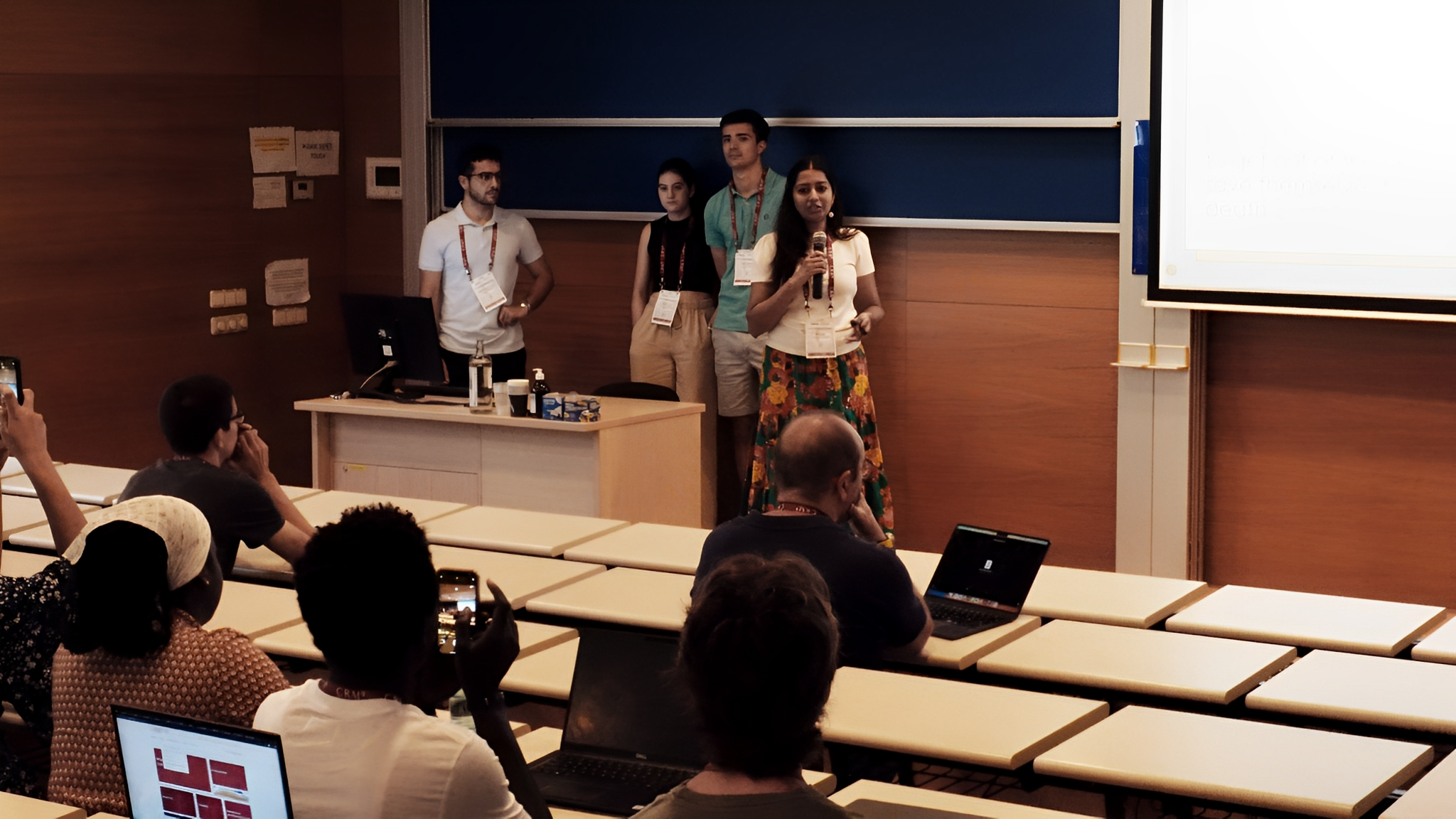
For David Romero, director of the Knowledge Transfer Unit at CRM, this is precisely the point: “This kind of activity puts students in touch with problems that aren’t polished or prepared for a textbook. They’re raw, they’re real, and that forces them to think.” He added: “At CRM, we believe deeply in the connection between knowledge and society. That’s why we organise things like this; to make sure talent doesn’t stay isolated in theory.”
Emilio Carrizosa, professor at Universidad de Sevilla and president of Math-in, echoed this sentiment: “Events like this one are essential. They show that mathematics can, and should, leave the university walls and go solve real-world problems.” But beyond the technical skills, he emphasised what students take with them: “It’s not just about solving a problem. It’s about learning how to work in a team, how to explain your ideas, and how to listen. That’s what they’ll carry with them into any career.”
The IMW was not an isolated event, it preceded the European Study Group with Industry (ESGI), creating a powerful continuity: first the students, then the professionals, tackling problems side by side in the same space. This back-to-back setup maximised opportunities for networking.
Behind the scenes, the activity was coordinated by the Knowledge Transfer Unit at the CRM: Lucía Escudero, Marc Homs-Dones, Manel Mas, and David Romero, who served as the mentors for the four working groups. Their work, in collaboration with representatives from Spanish and Portuguese universities and industrial platforms, ensured that both the scientific content and the organisational logistics of the IMW ran smoothly and effectively.
Subscribe for more CRM News
|
|
CRM CommPau Varela
|
From Barcelona to West Bengal: Chemistry Meets Mathematics to Enhance Water Filter Design
Researchers at the Centre de Recerca Matemàtica, in collaboration with IIT Kharagpur and UPC, have developed a mathematical model that accurately predicts the performance of fluoride-removal water filters made of mineral-rich carbon (MRC) and...
Polytopes, Matroids, and the Friends You Make: Martina Juhnke on Two Months at the CRM
The Centre de Recerca Matemàtica recently hosted a research programme on Combinatorial Geometries and Geometric Combinatorics, focusing on the overlap between polytopes and matroids. Martina Juhnke, a member of the scientific committee, reflects on how this programme...
BAMB! 2025: Participants Return to the CRM for Research Stays
In October 2025, the Centre de Recerca Matemàtica hosted Josefine Meyer (ISTA) and Cate MacColl (University of Queensland) for a month-long research stay following their participation in the BAMB! Summer School. Despite studying vastly different subjects, from...
Connecting Shapes, Patterns, and Ideas: the Closing Conference on Combinatorial Geometries and Geometric Combinatorics
During five days, the CRM hosted the Closing Conference of the MDM Focused Research Programme on Combinatorial Geometries & Geometric Combinatorics. The event featured plenary talks, contributed sessions, and posters on topics from matroids and polytopes to...
Xavier Ros-Oton among the 65 most cited mathematicians in the world
ICREA professor at the Universitat de Barcelona and CRM affiliated researcher Xavier Ros-Oton appears on Clarivate's Highly Cited Researchers 2025 list, which this year reinstates the mathematics category after two years of exclusion.Citations are a strange way to...
New Horizons for H- and Γ-convergence: From Local to Nonlocal (and viceversa)
The researchers Maicol Caponi, Alessandro Carbotti, and Alberto Maione extended the H- and Γ-convergence theories to the setting of nonlocal linear operators and their corresponding energies. The authors were able to overcome the limitations of classical localization...
Diego Vidaurre joins the CRM through the ATRAE talent programme
Diego Vidaurre has joined the Centre de Recerca Matemàtica through the ATRAE programme, bringing his expertise in modelling spontaneous brain activity across multiple data modalities. His work focuses on understanding how the brain’s intrinsic dynamics shape...
El CRM a la Setmana de la Ciència: una ruta entre dones, formes i pensament
El CRM va participar en la 30a edició de la Setmana de la Ciència amb una ruta guiada que va combinar les biografies de dones matemàtiques amb obres d'art del centre, connectant ciència, història i creació artística.El 12 de novembre, el Centre de Recerca Matemàtica...
Stefano Pedarra Defends his PhD Thesis on the Interaction between Tumour Cells and the Immune System
Stefano Pedarra has completed his PhD at the Centre de Recerca Matemàtica with a thesis exploring how tumour-cell metabolism shapes the immune system’s ability to fight cancer. His work brought mathematics and biology into direct conversation, from building models to...
Els estudiants participants a la prova de preselecció de Bojos per les Matemàtiques visiten el CRM
La prova de preselecció de Bojos per les Matemàtiques va reunir estudiants de tot Catalunya a la UAB i al CRM, amb presentacions a càrrec de Montse Alsina, presidenta de la Societat Catalana de Matemàtiques, Núria Fagella, degana de la Facultat de Matemàtiques i...
Jordi Mompart highlights the role of artificial intelligence in sport at the XIII GEFENOL-DIFENSC Summer School
The XIII GEFENOL-DIFENSC Summer School gathered over thirty researchers from across Europe to explore how statistical physics helps explain complex phenomena in biology, ecology, networks, and social systems. In his closing lecture, Jordi Mompart (UAB) examined how...
Critical Slowing Down in Genetic Systems: The Impact of Bifurcation Proximity and Noise
An international collaboration including researchers from the Centre de Recerca Matemàtica (CRM) has shown that when several bifurcations occur close to one another, their interaction can dramatically amplify critical slowing down effect - the progressive slowdown of...

